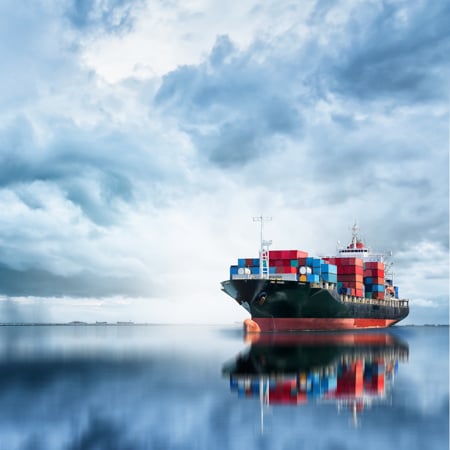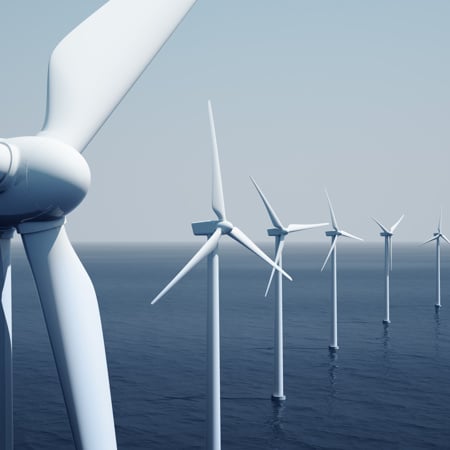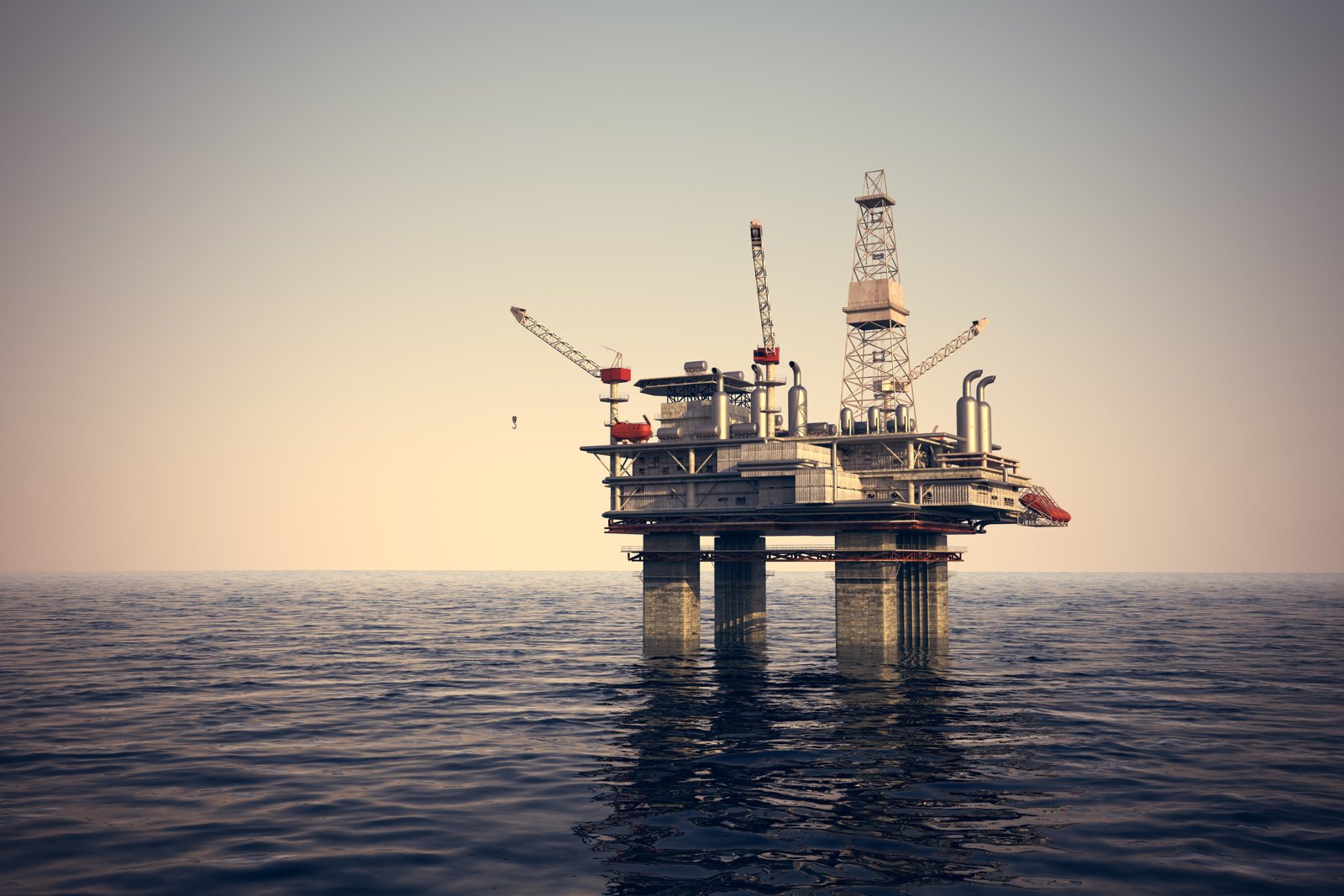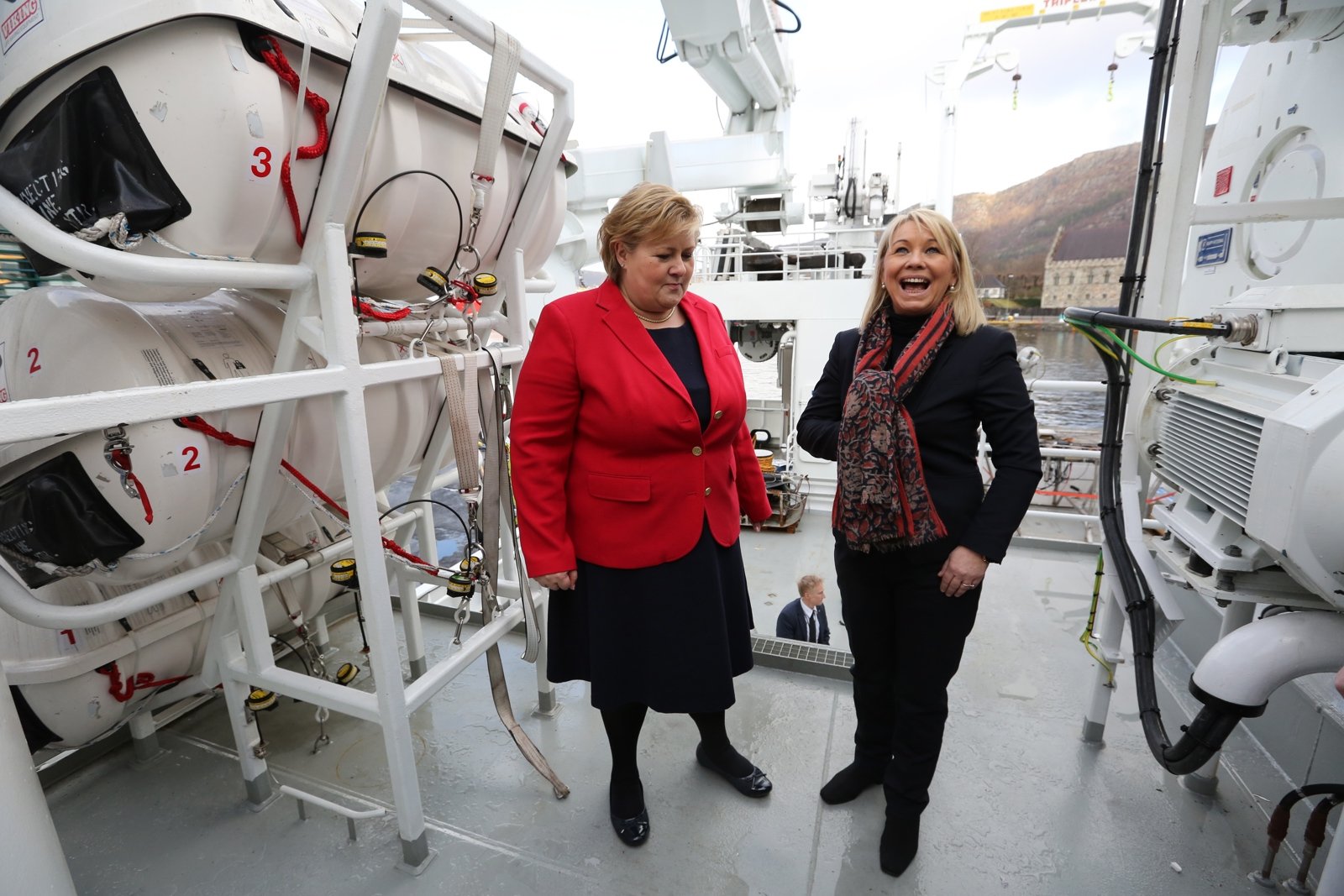
70 per cent of the Earth’s surface consists of water, and it is in the oceans that much of the economic development of the future will take place.
-
Text:OVE RONNY HARALDSEN
-
Ove Ronny HaraldsenGroup Communication Manager
The ocean space will be an important key area of commitment for KONGSBERG in the years to come. The ocean space holds great potential for solving the greatest challenges facing the world today. Energy, food, climate and transportation are all key areas in which the ocean space can be used in a sustainable manner using technology.
Technology is the key to facilitating the harvesting of marine resources. KONGSBERG is involved in all three international clusters that we have in Norway: oil/gas, maritime and fishing. The technology we provide is going to play a significant role in the future according to Even Aas, Group Executive Vice President Public Affairs of KONGSBERG.
“For example, two per cent of the food we eat today comes from the ocean. The potential for growth in this area is great. 90 per cent of biomass in the world is found in the ocean space”.
Compared with meat production, fish farming is significantly more climate-friendly. The production of one kilogram of meat generates much larger CO2 emissions than the production of one kilogram of fish.
“If we are to be able to provide enough food for the growing global population, we must increase the production of farmed fish and make the industry more efficient.”
Today, the industry is facing challenges as regards disease, which represents an obstacle to further growth.
“KONGSBERG is working closely with the company Ocean Farming to develop the world’s first digital offshore fish farm which will be able to overcome some of the challenges we face relating to disease,” says Even Aas.
A number of countries and companies are currently intensifying their positions with regards to the ocean space. The focus on technology and marine skills is increasingly an area of commitment for our customers, partners and competitors. The sea is going to have increased significance for the industry and for society.



NORWAY – AN OCEANIC NATION
The Norwegian maritime industry covers a broad area that includes shipping, shipyards, mariners, seafaring, fishing, banking and finance, academia, research and technology companies. In total, the industry gives employment to more than 100,000 people and makes up 12 per cent of the annual GNP for Norway.
Norway’s maritime industry has an international focus and also has a strong global presence within the entire maritime cluster, from Singapore to the US. In relation to international competition and with its leading domain knowledge and technology expertise, Norwegian maritime industry has shown itself to be very competitive. This generates important export income for the country.
“Norway has great potential for further growth at its doorstep, and all the industries listed above will play a major role. Technology and expertise from the traditional industries create a platform for new and emerging ocean-based industries with everything from extraction from the ocean floor, energy production on the surface and the utilisation of biological raw materials from the ocean to experiences”, says Inger Solberg, Director of Sustainability Norway.
THE OCEAN STRATEGY
The government presented its ocean strategy in February this year. The ocean strategy is the government’s plan for creating growth and more jobs within the Norwegian ocean industries. The OECD estimates that oceanic economies could more than double by 2030. The strategy includes several measures for further developing Norwegian ocean industries, and facilitating news ones to emerge,” explains Minister of Trade and Industry Monica Mæland (H).

“Norwegian technology will be a key factor when it comes to implementing the government’s ocean strategy. Norway is a leading maritime technology nation, and this enables us to build highly advanced vessels. We are in the midst of an accelerating technology shift involving robotisation, automation and digitalisation. Here Norway benefits from having much expertise within an area where we are already world-leading. With this strategy, the government is looking to secure Norway’s position as one of the world’s leading oceanic nations”, says Mæland.
“Which measures does the government consider to be the most important going forward?
“It is mainly about three things. Firstly, we need to gain knowledge about ocean resources and how this potential can be realised through technology. Second- ly, we have framework conditions. We need legislation to be organised in a way that ensures new opportunities and that new species can be utilised. Thirdly, it is about internationalisation – Norway needs to be promoted as a maritime nation more than ever. Simply for the sake of attracting those who seek to invest, work, conduct research or trade with Norway, says Minister of Trade and Industry Monica Mæland (H).
KONGSBERG, AN OCEAN SPACE COMPANY
KONGSBERG has provided input for the government’s ocean strategy, and the group is very happy with what was presented in 2017. The ocean space will be one of KONGSBERG’s key areas of commitment in the years to come. Technologies enabling autonomy, hydroacoustics, sensor technology, advanced data analysis and data processing are all areas which KONGSBERG believes will be central going forward. This will also strengthen KONGSBERG’s international position and provide new opportunities for exporting technology, explains Even Aas.
“The importance of full scale test areas such as those in the Trondheim Fjord have been emphasised in the strategy, and we think this is a good example of how authorities can play an active, facilitating role in technology development. We are also pleased to see that space technology, an area in which Norway is a significant player, is duly mentioned in the strategy”, says KONGSBERG’s Even Aas.
Today, KONGSBERG delivers technology enabling mapping and utilisation of oil, gas and minerals below the seabed. In the water column, KONGSBERG supplies technology for sustainable fishing. On the sea surface, KONGSBERG supplies technology to ships using the ocean for transport, for offshore vessels and drilling rigs, for wind farms creating green energy, and for sustainable fishing. Our space technology contributes to ocean space monitoring and utilising information technology resources. With regard to defence, KONGSBERG delivers systems that contribute to asserting dominion over resources found within the ocean space.
“Historically, Norway has built up technological positions within shipping, fishing and utilisation of ocean- based resources such as oil and gas. In order to maintain and secure these positions, we believe Norway has a strong potential for further developing existing technology. This is essential within areas where there is currently insufficient technology to achieve the goals that Norway and other nations have set regarding the ocean space”, says Even Aas.
THE RESEARCH COMMUNITY
In February, SINTEF Ocean and the Geological Survey of Norway (NGI) announced that they will be increasing cooperation and research within offshore wind energy. At the beginning of 2017, SINTEF, which is the largest research institute in Norway, took its research into the ocean space, forming a new institute called SINTEF Ocean. NGI is Norway’s largest geotechnical academic environment with more than 40 years’ experience as a supplier of foundation solutions within oil and gas.
“SINTEF and NGI have many years’ experience in offshore technology. This is chiefly connected to development in the areas of oil and gas. We have both also identified and focussed strategically on offshore wind energy as an area that we like and could contribute to. Together we are strong and also the leaders in this field”, says Lars Andresen, Managing director at NGI.
History has shown that close ties between research environments, the industry and a demanding final user have produced results. KONGSBERG is currently in close co-operation with research institutes like SINTEF and Forsvarets forskningsinstitutt (the Norwegian Defence Research Establishment).
“This three-pronged co-operation has resulted in technologies such as dynamic positioning, a world- leading environment for hydroacoustics, underwater vehicles such as HUGIN and MUNIN and the best sonar systems for submarines that can be found on the market. Thus we have been clear that there should be public investment on ocean space in Norwegian research institutes, Norwegian academia and in Norwegian companies also. We are very pleased that the government has promoted this,” Even Aas concludes.


